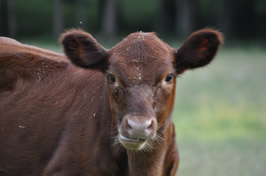Genes come in pairs (one from the father, one from the mother). An allele is either of the two copies of the same gene. In the case of Dexter coloration, we will consider our baseline color to be black. There are two completely separate genes that will make Dexters a color other than black. In both cases, these colors are recessive to black, so the animal must receive the same non-black allele from both parents in order to appear non-black. One is the Extension gene, (EXT) that determines if an animal is red. The other is Tyrosinase Protein 1 (TYRP 1) that determines if an animal is dun. Although the EXT variations are found in many breeds, the genetic variation in TYRP 1 that causes dun colored Dexters seems to be exclusive to the Dexter breed. EXT and TYRP 1 work independently of each other, so an animal that has one red allele at EXT and one dun allele at TYRP 1 will appear black. The following charts show all the possible genotypes an animal may have at EXT and TYRP 1, and the resulting color of the animal.
See also Genetic Terms
| This animal is Black carries Red |
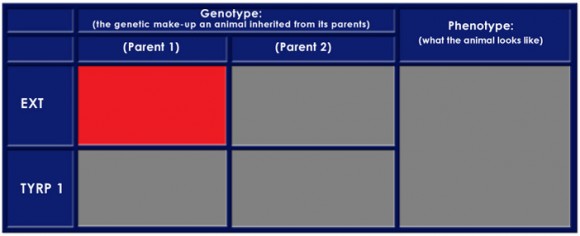 |
| This animal is Red It takes two red alleles to make an animal that is red |
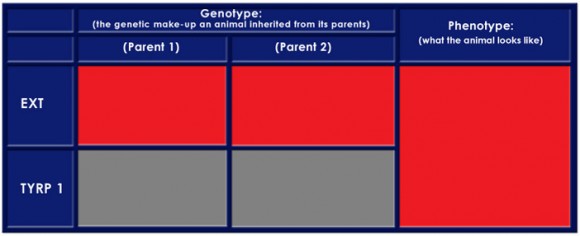 |
| This animal is Dun It takes two dun alleles to make an animal that is dun |
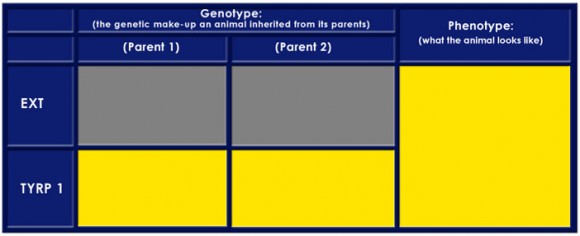 |
| This animal is Black | 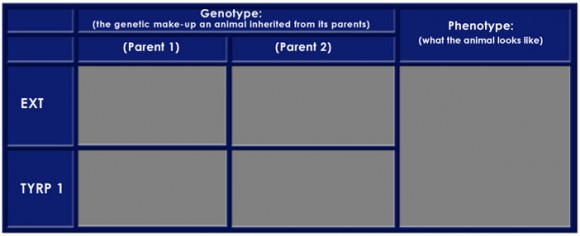 |
| This animal is Black carries Red & Dun |
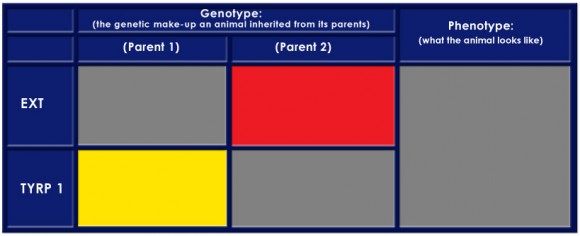 |
| This animal is Red carries Dun It takes two red alleles to make an animal that is red |
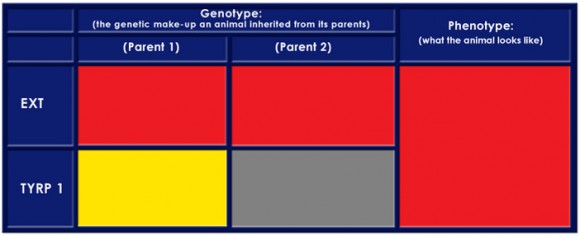 |
| This animal is Black carries Dun |
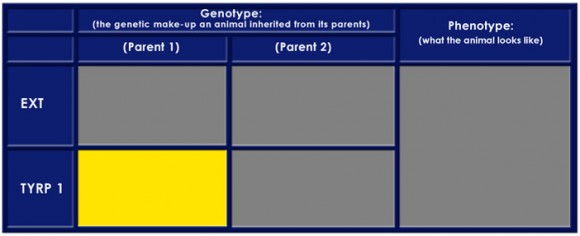 |
| This animal is Dun carries Red It takes two dun alleles to make an animal that is dun |
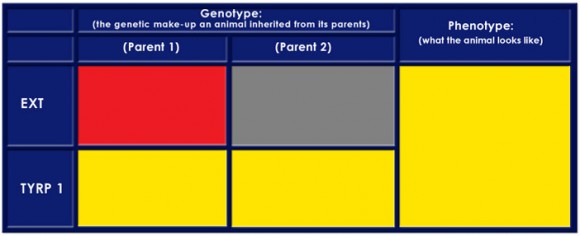 |
| This animal is Red carries Dun Ultimately red is dominant over dun. This is only important when an animal carries two red alleles and two dun alleles. |
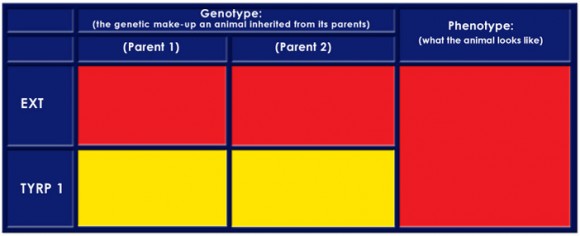 |
